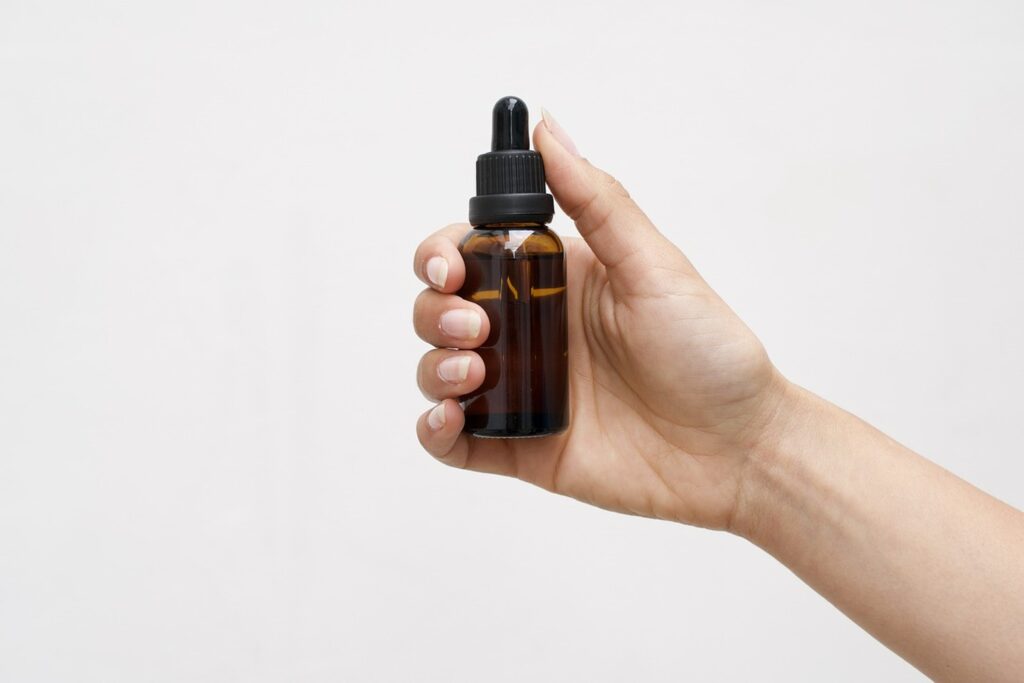
Cannabis tinctures have existed for at least 2,000 years. But they’ve taken on new significance in recent years thanks to the expanding legal market. Many curious consumers and patients want to explore the benefits of cannabis, but not all are drawn to the traditional smoking lifestyle.
Maybe you find yourself in this boat. You want to enjoy the therapeutic or recreational benefits of cannabis but don’t want to inhale all the skunky smoke or get baked out of your mind on edibles.
Tinctures are the perfect solution: they’re discreet, easy to measure and consume, and very light in terms of flavor and aroma. The trick is finding the optimal tincture dosage. Thankfully, that’s pretty easy as well once you understand what the numbers mean.
Contents
A Brief Overview of Cannabis Tinctures
A cannabis tincture is a liquid preparation designed for sublingual administration. The cannabinoids (usually THC and/or CBD, depending on the product) are extracted from the plant using a solvent and dissolved in an alcohol solution.
Just use the provided dropper to place a few drops under your tongue for about 30 seconds and allow the cannabinoids to be absorbed by the blood vessels. A good cannabis tincture can take effect within about 20 to 30 minutes.
Tinctures may seem like a recent trend, but they’re actually one of the oldest cannabis delivery systems.
The Chinese physician Hua Tuo developed a hemp-based tincture known as ma-fei-san in the first century AD. And at one time, tinctures were the most popular cannabis delivery system in the U.S.
Understanding Cannabis Tincture Dosage
In order to find your optimal tincture dosage, there are a few figures you need to understand.
- The amount of liquid in the bottle is measured in millimeters. You can find this number on the label. Most tinctures contain 30ml, but other sizes (including 15ml) are also available.
- The amount of THC (or CBD, or any other extracted cannabinoids) is measured in milligrams. You can find this information on the label as well.
- Sometimes the label will provide the amount of THC/CBD per serving. For example, it might say 10mg of THC per serving. The serving amount is typically the amount of liquid in one full dropper.
- Sometimes the label will only provide the amount of THC/CBD per bottle. For example, it might just say 1,000 mg THC or 1,500 mg CBD. That’s when you have to do a bit of math.
Calculating the Total Cannabinoids Per Serving
When calculating tincture dosage, keep in mind that one milliliter of liquid—or one full dropper—is generally considered a serving. So a 30ml bottle would contain 30 servings, and a 15ml bottle would contain 15 servings.
So let’s say you have a 30ml bottle with 500mg of THC. Just divide the total THC by the number of milliliters (or servings) in the bottle. That would give you about 16.66 mg of THC per dropper.
Of course, your own dosage goals might be higher or lower than the actual serving size. So you’ll want to modify your consumption accordingly.
Related Article: How to Use Cannabis Concentrates
Understanding Cannabinoid Ratios
Rather than simply showing you the milligrams, some tincture labels will contain cannabinoid ratios. These are important to understand as you learn how to dose cannabis tinctures.
For example, you might find a label that reads 20:1 CBD:THC or 1:1 CBD:THC. This ratio just indicates the amount of one cannabinoid in relation to another.
- 20:1 CBD:THC = 20 parts CBD per one part THC
- 1:1 CBD:THC = equal amounts CBD and THC
- 3:1 CBD:CBN = 3 parts CBD per one part CBN (cannabinol)
These ratios can be helpful to know if you’re targeting specific effects or health benefits of cannabis. For example, if you’re looking to address seizures but don’t want a heavy psychoactive experience, you would want a tincture with high CBD and low THC.
The product label or manufacturer website should still list the precise milligram count for each cannabinoid.
How to Dose Cannabis Tinctures

Once you understand how tincture dosages are measured, the next step is to determine your own optimal tincture dosage. Ultimately, it depends on your experience levels, your goals, and the types of cannabinoids you’re consuming.
THC Tincture Dosage
Five milligrams is considered one standard unit of THC. It’s also a good starting marijuana dosage for beginners. If 5mg doesn’t yield the desired effect, you can adjust your dosage in small increments (generally 2.5 to 5mg at a time).
Microdosing THC: Microdosing allows you to achieve the therapeutic benefits of cannabis over time, but without achieving a strong buzz. If you want to try microdosing, start with about 2.5mg of THC per serving.
CBD Tincture Dosage
Cannabidiol is extremely well-tolerated in high doses. However, some experts recommend capping your dosage at 20 to 40mg, at least in the beginning. Again, you can adjust up or down as you learn your own tolerance and needs.
Microdosing CBD: A microdose of CBD is typically about 10mg. You can microdose several times throughout the day.
Other Cannabinoids
If your tincture contains another minor cannabinoid like CBN or CBG, the guidelines are roughly the same as for CBD.
The exceptions to this rule are Delta-8 and Delta-10, both of which are THC isomers and should be treated like THC.
Related Article: Best Cannabis Cooking Classes in Los Angeles
Find Your Own Optimal Tincture Dosage
No two people are exactly alike. Everyone has different body chemistry, body fat content, metabolism, and needs. However, when you understand how to dose cannabis tinctures, you can use the general guidelines as a roadmap for determining your own optimal dose.
The key is to start small, listen to your body, and adjust your dosage in increments. It shouldn’t take you very long to figure out your ideal intake.
SoCal residents, there’s no need to wait! Our weed delivery service offers a wide range of quality tinctures you can try without stepping a foot outside your door. Order on our website and get your tincture delivered to your doorstep in a flash!










